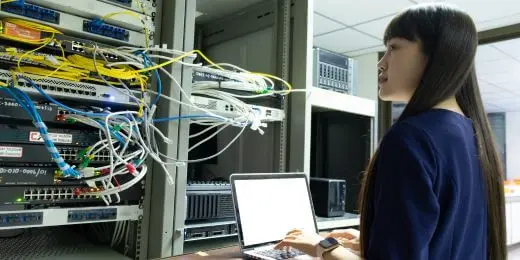What is PCI Compliance?
The payment card industry (PCI) has a specific set of standards in place designed to ensure that credit card companies maintain a level of safety and security with their credit card transactions. PCI compliance refers to all the technical requirements and operational standards organizations must follow to ensure that the credit card data that cardholders provide are securely processed and transmitted during credit card transactions.
These standards are put in place and monitored by the PCI Security Council.They are instrumental in reducing data breaches and cyber security risks for credit card companies and cardholders.
Importance & Benefits
One of the biggest reasons for businesses to strive for PCI compliance is to establish more trust between the business and the client. Modern cardholders are cautious with their data and follow many practices to ensure they’re safe. This includes only using their cards for payments at PCI-compliant businesses, so they know the company follows all the standards and meets the requirements.
On top of that, PCI compliance protects the company and customer data. Nowadays, data breaches are a major risk for organizations as it puts them at risk of fraud, legal issues, and more. When the business meets the requirements for PCI compliance, they establish a baseline for its security measures, making it easier to build a security program that effectively prevents data breaches.
Drawbacks of Non-Compliance
Any business that accepts credit card payments must maintain PCI compliance. Due to the many disadvantages associated with non-compliance, which is why businesses are urged to meet the standards and requirements. Below are some of the drawbacks of non-compliance with PCI standards.
- Fines – Businesses may face fines and penalties for PCI non-compliance. The exact cost of the fine varies depending on the severity of the non-compliance and the size of the business. These fines are imposed monthly and can severely impact a business’ assets.
- Higher fees – Banks put more trust in businesses that comply with PCI standards. So, they typically charge businesses that aren’t compliant with PCI standards higher fees than if they were compliant. These costs can add up over time and be a major hassle for the company.
- Losing credit card payments – Without PCI compliance, businesses won’t be allowed to accept credit card payments. If your business accepts credit cards as payments, you must remain PCI compliant.
- Risk of legal action – Clients whose data may have been compromised due to a data breach caused by PCI non-compliance may file legal action against the company, which can be costly.
Requirements for PCI Compliance
PCI has a hefty list of requirements that companies must meet to be compliant. This ensures that the client’s credit card data is securely stored and transmitted. If you accept credit card payments, you must ensure you meet these requirements to remain PCI compliant. These requirements include:
- Install a firewall to protect cardholder data.
- Avoid using default system passwords and other security parameters.
- Protect cardholder data.
- Encrypt the transmission of cardholder data.
- Protect all systems against malware with anti-virus or similar programs.
- Develop secure systems and applications.
- Ensure that cardholder data is restricted to need-to-know.
- Authenticate security access systems.
- Restrict physical access to the data of cardholders.
- Monitor network access and cardholder data.
- Test security systems and standards regularly.
- Maintain a policy that ensures security personnel receive information regarding cardholder security.
Create Your Own PCI Compliance Checklist
Eliminate manual tasks and streamline your operations.
Get started for FREEHow to Be PCI-Compliant in 7 Steps
The first step to becoming PCI compliant is meeting all the requirements mentioned above. Without meeting the requirements, you won’t qualify for compliance. From there, the process is as follows:
Check for PCI Level
To start, you have to assess the number of transactions you process annually, as this determines the requirements you need to reach to ensure that you’re PCI compliant.
Map Out Cardholder Data
Another step to accomplish is mapping out your cardholder data. This includes how it’s transmitted, applications used for processing and encryption, as well as the people that will work with the data.
Answer the Self-Assessment Questionnaire
A self-assessment questionnaire (SAQ) allows companies to check if they are PCI-compliant on their own. This is a great tool to assess whether or not you meet all 12 requirements for compliance. Once completed, the SAQ will have to be validated by an auditor.
Accomplish the Attestation of Compliance
An Attestation of Compliance (AOC) is the document that certifies that you completed each requirement necessary for your level of PCI compliance.
Perform a Vulnerability Scan
There are third parties that can conduct vulnerability scans of your system to find any weakness that could put data at stake and cause you to be non-compliant with PCI standards. This is very useful for ensuring that your application goes smoothly.
Submit Documents
While the type of documents you have to submit depends on the level of PCI compliance you’re aiming for, the second-to-the-last step always involves submitting all necessary documents.
Monitor Your Progress
PCI compliance is a continuous process. It’s important for the organization to consistently monitor security systems through security audits to ensure that there are no cracks that may be exploited, putting cardholder data at risk.




